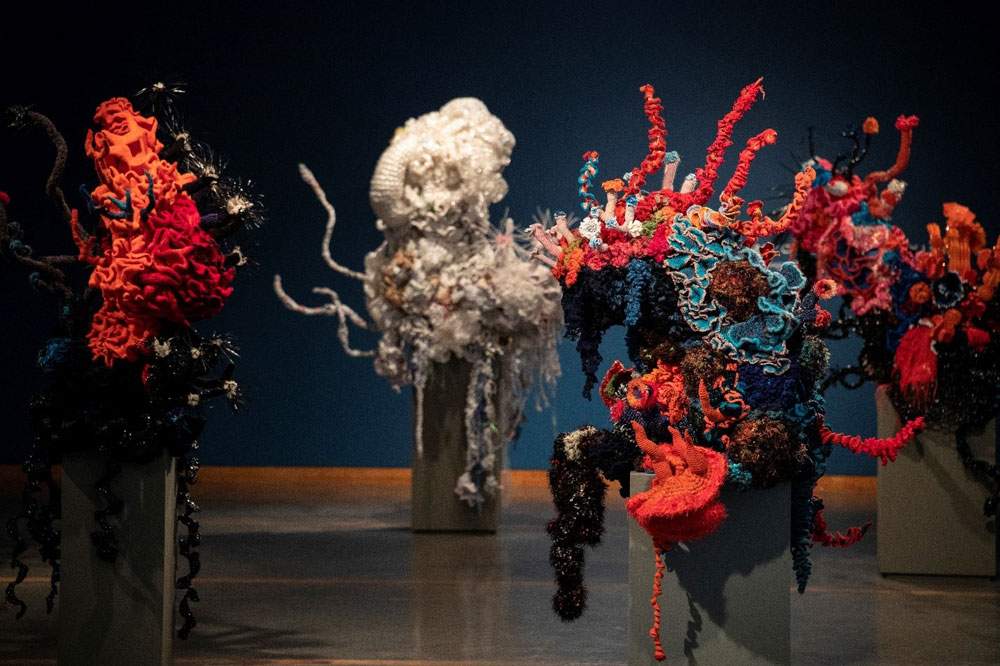First Helsinki Biennial in June. The sea and environmental protection are the central themes
The Helsinki Biennial will be held from June 12 to September 27, 2020: it is the first biennial for the Scandinavian country and precisely it will take place on Vallisaari, an island off Hensinki in the Baltic Sea.
The central theme will be The Same Sea and will focus on reflecting on environmental preservation andinterdependence. The biennial will bring together forty Finnish and foreign artists and will present mostly new commissions and site-specific works to be placed in the maritime setting.
Participating countries include Australia, Cambodia, Germany, India, Japan, Kenya, Latvia, Poland, South Korea, Thailand, Turkey, the United Kingdom, and the United States, which will be coordinated by Pirkko Siitari and Taru Tappola, Biennale curators and chief curators of the Helsinki Art Museum (HAM).
Through this Biennale, Helsinki aims to establish itself as an art and cultural capital. “Art and culture form an essential part of Helsinki’s history. We recognize how investment in the arts contributes positively to the development of the city, but also directly to the well-being of our citizens. The Helsinki Biennial, open free of charge to all, will provoke and inspire the public by addressing important global issues. In addition, its location on an island will give the exhibition a unique allure of continuous exchange between art and the surrounding nature,” commented Helsinki Mayor Jan Vapaavuori.
The new commissions cover various themes, from relationships, nature, boundaries, identities, human traces, time and empathy. As a physical manifestation of interconnectedness, Jaakko Niemelä ’s large wooden construction Quay 6 welcomes visitors disembarking at Vallisaari’s North Pier. Referencing the melting of Greenland’s northern ice sheet, the construction reaches six meters in height, reflecting the rising sea level should the glacier disappear completely.
Christine and Margaret Wertheim bring their Crochet Coral Re ef project to The Helsinki Satellite Reef, one of the world’s largest participatory science and art projects. Made of recycled plastic, including discarded plastic bags, the handmade coral reef is being created with the residents of Helsinki, drawing attention to the piles of plastic waste that threaten the oceans.
Other commissions have also involved Helsinki’s local communities, such as the collaboration between Pawel Althamer and the nearby Suomenlinna Open Prison for Seven Prisoners; a two-part documentary and VR film that invites viewers to join seven inmates, including Althamer himself, on an escape from prison through open waters and shifting landscapes.
Through the use of recycled materials, Tadashi Kawamata ’s Vallisaari Lighthouse becomes a temporary landmark, consisting of material found on Vallisaari. Located on top of a bunker-like elevator shaft and raised to a height of several meters, the lighthouse can be seen from various vantage points at sea.
Marja Kanervo ’s work also draws on the island’s existing infrastructure. Working on site on three floors of Block A of the Pilot House, Kanervo’s interventions, shapes and marks imprinted in space, blend with the traces of former residents.
Placed outside the Alexander Battery, one of the Biennale’s main venues, Laura Könönen ’s large-scale sculpture represents an explosion of broken rock fragments. The work forces us to revisit our ideas of stability and permanence. The sculpture is part of the larger work No Heaven up in the Sky, which will be on permanent display in Helsinki’s Hyväntoivonpuisto Park after 2020.
Katharina Grosse ’s large in situ painting masks the exterior walls of the former Vallisaari school building, converging with the surrounding landscape. Rather than a conventional painting, it will be more like a sculpture emerging from a geographical location.
The Helsinki Biennale is supported by the City of Helsinki and the Jane and Aatos Erkko Foundation.
Pictured are Margaret and Christine Wertheim and the Institute For Figuring. Coral Forest at the Lehigh University Arts Galleries (PA). The artists’ new commission, The Helsinki Satellite Reef, will be presented at the Helsinki Biennial. Photo courtesy LUAG by Stephanie Veto.
 |
| First Helsinki Biennial in June. The sea and environmental protection are the central themes |
Warning: the translation into English of the original Italian article was created using automatic tools. We undertake to review all articles, but we do not guarantee the total absence of inaccuracies in the translation due to the program. You can find the original by clicking on the ITA button. If you find any mistake,please contact us.




























